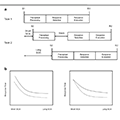Abstract
The congruency effect of a task-irrelevant distractor has been found to be modulated by task-relevant set size and display set size. The present study used a psychological refractory period (PRP) paradigm to examine the cognitive loci of the display set size effect (dilution effect) and the task-relevant set size effect (perceptual load effect) on distractor interference. A tone discrimination task (Task 1), in which a response was made to the pitch of the target tone, was followed by a letter discrimination task (Task 2) in which different types of visual target display were used. In Experiment 1, in which display set size was manipulated to examine the nature of the display set size effect on distractor interference in Task 2, the modulation of the congruency effect by display set size was observed at both short and long stimulus-onset asynchronies (SOAs), indicating that the display set size effect occurred after the target was selected for processing in the focused attention stage. In Experiment 2, in which task-relevant set size was manipulated to examine the nature of the task-relevant set size effect on distractor interference in Task 2, the effects of task-relevant set size increased with SOA, suggesting that the target selection efficiency in the preattentive stage was impaired with increasing task-relevant set size. These results suggest that display set size and task-relevant set size modulate distractor processing in different ways.
